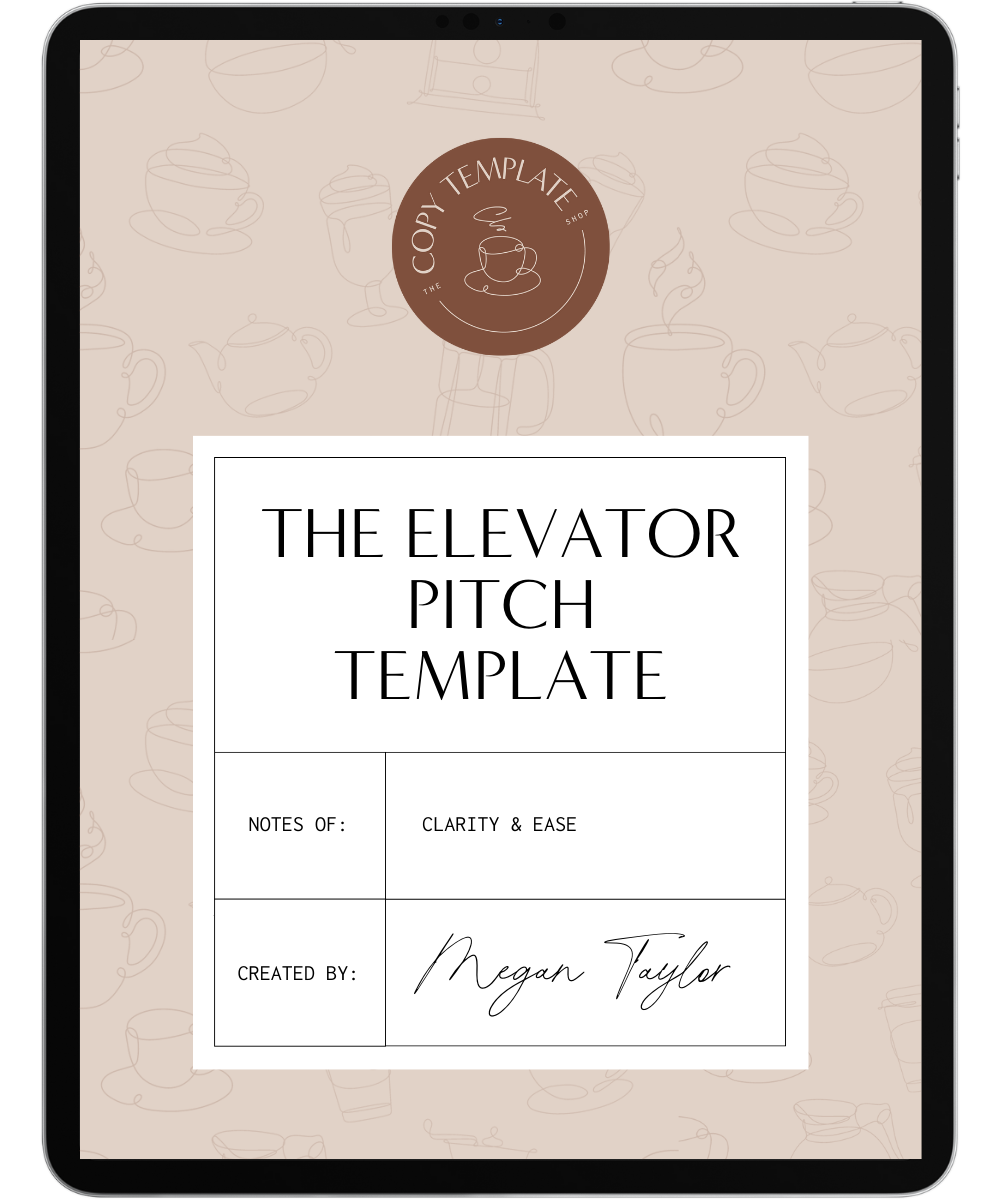Why Conversational Writing Matters
Conversational writing involves driving a deeper connection with your reader by suggesting that you're having a 1:1 conversation with them instead of just presenting them with a bunch of facts. If you want a long-lasting brand, connection-based marketing is a must. Here are 6 tips to help you write from a place of connection and conversation
Tip 1: Know Your Audience
Before you start writing your copy, get crystal clear on who you’re talking to. The better you know your audience, the easier it is to connect with them on a personal level. We recommend the best way to speak their language, is ask them questions!
- What is the big, overarching, intimidating problem they're facing?
- Why is that problem frustrating them?
- How is that problem showing up in their day-to-day life?
- What are they trying to achieve?
- What moment made them realize they need to find a solution to their problem?
Our messaging clarity journal is recommended if you need some additional guided questions to help you reconnect with your vision, your audience, and your unique positioning so you can confidently share your offers and magic with the world.
Tip 2: Write Like You Talk
Time to ditch the jargon and fancy words—just write the way you would in a conversation. Use contractions and informal phrases if that’s how you naturally speak. The goal is to make your writing feel conversational and relatable. While it sounds like a simple tip, if you do implement this, it will help with the conversation of your sales copy because your audience will feel connected to you and as if you are close friends having coffee together.
Tip 3: Engage With Questions
Want to keep your readers engaged as they read? Start asking questions. When you ask questions throughout your copy, you’re creating a two-way conversation. It makes your readers feel like they’re part of the dialogue, not just passive listeners/readers. This simple trick keeps them engaged and helps your copy feel more interactive and less like a monologue.
Tip 4: Use Short Sentences & Paragraphs
Keep it snappy! Short sentences and paragraphs are your friends when it comes to conversational writing. They make your copy easy to read and keep the pace flowing. Also, break up your text into bite-sized chunks for visual appeal. Aim for no more than three lines per paragraph.
Tip 5: Use Humour (But Don’t Force It)
If you’re naturally funny in real life, let it show in your writing. A bit of humour can go a long way in making your copy more relatable and fun to read. Just make sure it feels natural and fits with the message you’re trying to convey. If humour doesn’t come easily, that’s okay—better to keep it straightforward than to try too hard. Sometimes, it helps to write a 'boring' draft first, then go back and ask yourself, 'how can I add more spice here?'
Tip 6: Active Voice Over Passive Voice
When it comes to conversational copy, active voice is where it’s at. Clear and direct sentences pack more punch.
Here are active voice examples tailored for a virtual assistant:
- "I manage your schedule so you can focus on growing your business."
- "We streamline your admin tasks to save you time and energy."
- "My services handle your inbox, ensuring you never miss an important email."
Here are passive voice examples tailored for a virtual assistant:
- "Your schedule is managed so that business growth can be your focus."
- "Administrative tasks are streamlined to save you time and energy."
- "Your inbox is handled to ensure important emails are never missed."
Conversational writing is all about making your reader feel like they’re having a real conversation with you. By knowing your audience, writing like you talk, and keeping things engaging and snappy, you’ll create copy that not only sells but also builds relationships.
The Messaging Clarity Journal

Brew more clarity into your messaging strategy with this in-depth journal, offering the ideal blend of introspection and strategic visioning.
Looking for more copy tips?
If you’re wanting to refine your messaging and improve your opt-in page, check out the below
How to update website content: a step-by-step guide for business owners
Sales Page Structure Secrets: A Guide for More Conversions >
Website Copy: 4 Common Mistakes to Avoid and How to Fix Them >
Pin for later






